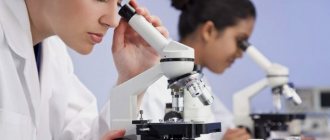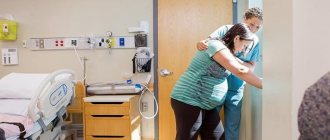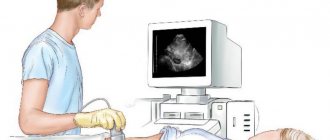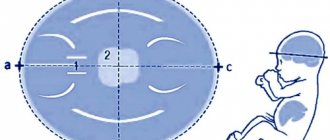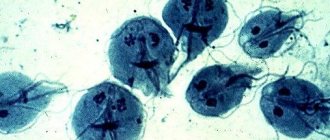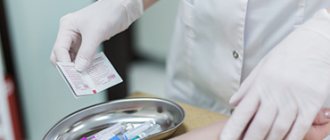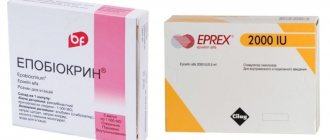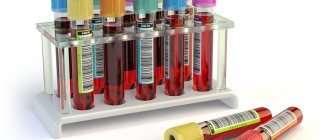The human body is constantly exposed to external factors and comes into contact with various living organisms and infections. The immune system does not always cope with the load placed on it, so the protective forces are weakened. Frequent colds, acute respiratory viral infections, and susceptibility to other infections oblige doctors to prescribe an immunogram.
What is an immunogram?
This is a special blood test that allows you to assess the number of different immune cells, the antibodies they produce and a number of other substances that indicate the state of the body's defense systems. Depending on the purpose of the study and the capabilities of the laboratory, the number of parameters studied can vary significantly. An extended study allows you to study more than 25 different indicators - such an analysis reveals even hidden violations that cannot be detected by standard methods.
Human immunity can be divided into two parts: “slow” (humoral) and “fast” (cellular). The fast link reacts almost immediately after the pathogen (virus, fungus, bacteria, protozoa, etc.) enters the body. The task of this group of cells includes the following functions:
- Absorb and “digest” a malicious agent;
- Present or “tell” about a pathogenic microorganism to other immune cells that cannot detect it on their own;
- Destroy the largest number of identified microbes;
- Fighting various tumors and autoimmune processes is another important function of the immune system, which often does not allow the body to cope with the disease on its own.
After the “fast” link has absorbed the foreign body and told the “slow” link about it, the slow process of creating and releasing antibodies into the blood begins. Antibodies are substances that destroy a specific type of pathogenic agent. They are very specific and, in most cases, help the body finally cope with the existing disease. On average, the duration of their creation is 2-3 weeks.
The immunogram indicators reflect the work of each of the defense links. It is on the basis of their changes that a conclusion is made about the absence/presence of immunodeficiency, about the variant of the disorder and the optimal method of therapy.
| Immunity link, studied parameter | Function |
Cellular (“fast”) | |
| Cytotoxic T cells (CD3+, CD8+) | Recognition of harmful microorganisms and their destruction |
| T helper cells (CD4+) | They “tell” other defender cells about the presence of the pathogen and play a significant role in the formation of long-term immunity. |
| T-suppressors (CD8+) | Regulation of the activity of defense systems, protects the body from the development of autoimmune reactions (when antibodies are produced against healthy tissues) |
| T cells with receptor for IL-2 (CD25+) | |
| Carriers of apoptosis marker (CD95+) | Controlling the speed of cell self-destruction process |
Humoral (“slow”) | |
| B cells (CD+, 19CD+) | Responsible for the production of specific antibodies. In most cases, it is thanks to this pool of cells that complete recovery occurs. They protect the body from re-infection with the same infection for a certain time. |
| Immunoglobulin G | Antibodies produced by B cells. When contacted with a harmful microbe, they destroy its wall, resulting in death. |
| Immunoglobulin M | |
| Immunoglobulin A | |
| Immunoglobulin | Responsible for the development of any allergic reactions. |
Non-specific indicators (reflect the work of both units) | |
| natural killer (CD16+) or NK cells | Provide natural antitumor immunity |
| Cells with HLA marker | Reflects the activity of immune mechanisms |
| Phagocytosis | Recognition, uptake and presentation of harmful agents to T cells |
| Leukocyte migration inhibition reaction (abbreviated as RTML) | Laboratory test reflecting the functioning of the cellular unit. |
| NST test | Allows you to evaluate the activity of phagocytosis |
| Complement | Prevents the formation of large immune complexes (compounds of harmful particles with antibodies). Participates in neutralizing microbes |
In some cases, the doctor may recommend supplementing the analysis with a study of the content of interleukins in the blood - these are special substances that ensure the interconnection of various components of defense systems. If their production is disrupted, immunodeficiency states can also form.
general description
Immunological studies are diagnostic methods based on the specific interaction of antigens and antibodies. They are widely used for laboratory analyzes of infectious and parasitic diseases, as well as reliable determination of blood groups, hormonal imbalances, tissue and tumor antigens, recognition of allergies and autoimmune processes, protein species, as well as pregnancy.
| Blood collection for immunological research | The structure of immunoglobulin |
Indications for immunological studies
- congenital or acquired immunodeficiency conditions during life;
- allergic diseases that do not respond to effective therapy;
- infectious diseases of chronic and sluggish type;
- autoimmune and oncological diseases;
- before and after organ transplant surgery;
- preparation for major surgical interventions;
- assessment of the effectiveness of the developed treatment and analysis of side effects when prescribing drugs that affect the immune system.
Immunological blood test (immunogram) explanation:
- Immunoglobulin A (IgA).
- Immunoglobulin E (IgE).
- Immunoglobulin G (IgG).
- Immunoglobulin M (IgM).
- Alloimmune antibodies.
- Antinuclear factor.
- Antistreptolysin-O.
- Antisperm antibodies (ELISA).
- MAR test.
- Antibodies to thyroglobulin (AT-TG).
- Antibodies to thyroid peroxidase (AT-TPO).
- HLA typing class 2.
Immunoglobulin A (IgA)
Immunoglobulin A (IgA) is an antibody that is a protective factor for the mucous membranes of the human body. They are part of the b-globulin fraction and make up about 15% of the total amount of immunoglobulins in blood serum. Contained in milk, saliva, tear fluid, secretions of mucous membranes.
Content increase:
- chronic liver diseases;
- systemic lupus erythematosus;
- rheumatoid arthritis;
- multiple myeloma;
- glomerulonephritis;
- alcoholic damage to internal organs.
Content reduction:
- physiological decline in children under 6 months;
- cirrhosis of the liver;
- radiation sickness,
- poisoning (toluene, gasoline, xylene);
- use of cytostatics and immunosuppressants.
Immunoglobulin E (IgE)
Immunoglobulin E (IgE) is involved in allergic reactions and antiparasitic immunity.
Content increase:
- parasitic infestations (roundworms, nematodes, toxoplasma, schistosome, echinococcus, trichinella, amoebas);
- allergic rhinitis;
- hives;
- hay fever;
- allergic diseases;
- bronchial asthma.
Content reduction:
- ataxia;
- telangiectasia.
Immunoglobulin G (IgG)
Immunoglobulin G (IgG) provides passive immunity.
Content increase:
- rheumatism;
- systemic lupus erythematosus;
- rheumatoid arthritis;
- multiple myeloma;
- HIV;
- Infectious mononucleosis;
- acute and chronic infectious diseases.
Content reduction:
- physiological decline in children under 6 months,
- radiation sickness,
- treatment with cytostatics and immunosuppressants,
- poisoning (toluene, gasoline, xylene),
- cirrhosis of the liver.
Immunoglobulin M (IgM)
Immunoglobulin M (IgM) is part of the γ-globulin fraction. The first to appear after antigen administration. IgM includes anti-infective antibodies, blood group antibodies, and rheumatoid factor.
Content increase:
- acute fungal, parasitic, viral and bacterial infections,
- hepatitis and cirrhosis of the liver,
- rheumatoid arthritis,
- systemic lupus erythematosus,
- candidiasis,
- systemic vasculitis.
Content reduction:
- physiological decline in children under 6 months,
- splenectomy,
- radiation sickness,
- treatment with immunosuppressants and cytostatics,
- poisoning (toluene, xylene).
Alloimmune antibodies
Alloimmune antibodies are antibodies to the clinically most important erythrocyte antigens, primarily to the Rh factor.
Indications for the purpose of analysis:
- pregnancy (prevention of Rhesus conflict),
- monitoring pregnant women with negative Rh factor,
- miscarriage,
- hemolytic disease of newborns,
- preparation for blood transfusion.
Antinuclear factor
Antinuclear factor, when determined together with antibodies to DNA, is a diagnostic criterion for systemic lupus erythematosus.
Indicator increase:
- systemic lupus erythematosus,
- chronic hepatitis,
- rheumatoid arthritis,
- lupus nephritis,
- systemic vasculitis.
Antistreptolysin-O
Antistreptolysin-O is a marker of the presence of streptococcal infection in the body and is a laboratory criterion for rheumatism.
Indications for the purpose of analysis:
- rheumatism,
- glomerulonephritis,
- myocarditis.
Increased concentration:
- acute glomerulonephritis,
- rheumatism (level increased in 85%),
- erysipelas,
- scarlet fever,
- streptococcal infections (tonsillitis, chronic tonsillitis, pyoderma, osteomyelitis).
Antisperm antibodies (ELISA)
Antisperm antibodies (ELISA) are an additional test in the diagnosis of immunological causes of infertility in men and women. Antisperm antibodies are found in the blood, in the mucus of the cervix, seminal plasma, and on the surface of sperm. In men, it is better to detect antisperm antibodies in semen. Doubtful (close to threshold) values: 55-60 U/ml. In such cases, it is advisable to repeat the study after 2 weeks.
Indications for the purpose of analysis:
- unexplained infertility of a married couple,
- spermogram changes.
Increased values: probable factor of infertility.
MAR test
MAR test (Mixed agglutination reaction) is a quantitative determination of the presence/absence of class A antisperm antibodies using latex particles on the surface of sperm. The test determines the ratio (percentage) of normal immotile sperm, but coated with antisperm antibodies, to the total number of sperm.
Indications for the purpose of analysis:
- barren marriage,
- suspected immunological infertility in men.
Increasing value:
- high probability of this cause of male infertility.
Antibodies to thyroglobulin (AT-TG)
Antibodies to thyroglobulin (AT-TG) are antibodies to the precursor of thyroid hormones.
Indications for the purpose of analysis:
- newborns, high level of antibodies to thyroglobulin in the mother;
- adults: chronic Hashimoto's thyroiditis, diagnosis of hypothyroidism, goiter, diffuse toxic goiter (Graves' disease).
Increased concentration:
- Hashimoto's chronic thyroiditis,
- idiomatic hypothyroidism,
- autoimmune thyroiditis,
- diffuse toxic goiter (Graves disease),
- Down syndrome (weak positive result),
- Turner syndrome.
Antibodies to thyroid peroxidase (AT-TPO)
Antibodies to thyroid peroxidase (AT-TPO) are antibodies to the enzyme of thyroid cells involved in the synthesis of thyroid hormones; their presence is an indicator of the aggression of the immune system towards its own body. This is the most sensitive test for detecting autoimmune thyroid disease.
Indications for the purpose of analysis:
- newborns: elevated levels of thyroid hormones, high AT-T levels or Graves' disease in the mother;
- adults: diagnosis of disorders of the level of thyroid hormones, goiter, Graves' disease (diffuse toxic goiter), chronic Hashimoto's thyroiditis, ophthalmopathy: enlargement of the periocular tissues (suspicion of euthyroid Graves' disease - with normal levels of thyroid hormones).
Increased concentration:
- Graves' disease (diffuse toxic goiter),
- nodular toxic goiter,
- subacute thyroidin (de Crevena),
- postpartum thyroid dysfunction,
- Hashimoto's chronic thyroiditis,
- autoimmune thyroiditis,
- non-thyroid autoimmune diseases.
HLA typing class 2
HLA typing class 2 (human leucocyte antigens) - tissue compatibility antigens (synonym: MHC - major histocompatibility complex - major histocompatibility complex). The HLA phenotype is determined by polymerase chain reaction (PCR).
This study is not routine (mass) and is performed for diagnosis only in complex cases:
- assessment of the risk of developing a number of diseases with a known genetic predisposition,
- finding out the causes of infertility,
- finding out the causes of miscarriage (recurrent miscarriages),
- elucidation of the causes of immunological incompatibility,
- organ and tissue transplantation,
- assessment of the risk of type 1 diabetes mellitus with a family history.
Class 1 HLA antigens are present on the surface of almost all cells of the body, while class 2 histocompatibility proteins are located on cells of the immune system, macrophages, and epithelial cells.
The favorable prognosis for organ transplantation is higher when the donor and recipient are most similar in terms of histocompatibility antigens.
The similarity of spouses in histocompatibility antigens leads to “similarity”, which causes insufficient antigenic stimulation of the woman’s immune system, and the reactions necessary to maintain pregnancy are not triggered. Pregnancy is perceived as foreign cells and spontaneous abortion occurs. This “foreignness” is a normal phenomenon that triggers immunological reactions aimed at maintaining pregnancy. A group of immune cells is formed that produce special “blocking” antibodies. During the normal development of pregnancy, “blocking” antibodies to paternal HLA antigens appear from the earliest stages of pregnancy, and the earliest are antibodies to histocompatibility class 2 antigens.
Indications
- Frequent severe infectious diseases, especially in children of preschool and school age. At the moment, there is no consensus on what is considered “frequent” and “severe” infections. However, one should begin to suspect problems with immunity in the following situations: ARVI in children of mild to moderate severity more than 5-6 times a year;
- In adults (except for elderly people) – more than 3 times a year;
Before examining the immunogram, it is necessary to exclude the presence of secondary immunodeficiencies, which were listed above. They can be detected quite simply using routine blood tests, and the cost will be significantly lower than testing the function of leukocytes and other phagocytes.
Important Testing Information
The most difficult thing is to carry out an immunogram on a child - this is due to the immaturity of the immune system. However, an immunological study will make it easier for an experienced doctor to make a diagnosis of the disease and help prescribe the most effective methods of treating the pathology.
Article on the topic: Allergy to hair dye? How to avoid this disease in modern realities?
Some parents insist on an immunogram before vaccination. Testing is not necessary if the baby does not have birth complications. Testing is necessary for leukopenia - a decrease in the level of white blood cells in the blood.
The analysis results are ready in 3-5 days. Doctors usually claim that one study is not enough - it is advisable to repeat the immunogram after a couple of weeks, since the study shows more accurate results over time.
Preparation for the procedure
To obtain objective results, it is necessary to act correctly before drawing blood. To do this, just follow these simple rules:
- It is better to undergo the examination in the morning, on an empty stomach. If this is not possible, it is permissible to donate blood at any other time after a 4-hour period of fasting;
- It is not recommended to drink alcohol, caffeine-containing drinks, or energy drinks for 3 hours before the test. Water and weak tea can be drunk without restrictions;
- Several hours before the procedure, you should not smoke or be in the presence of a person who smokes;
- Immediately before donating blood, significant physical activity (running, lifting weights, playing sports), contrasting water treatments, hypothermia/overheating of the body should be excluded;
- To obtain the most information, it is best to carry out an immunogram for a child and an adult during a period of complete health. During illness, the body will react to damage to its own tissues or to infection, so it is quite difficult to draw a conclusion about the blood picture.
How to prepare for research
To obtain valid analysis results, a number of rules must be followed:
- Avoid taking an immunogram during the acute phase of pathology and menstruation;
- Do not drink alcohol for 48 hours before taking the test;
- Smoking on the day of the immunogram should be avoided until all necessary procedures are completed;
- Medicines (especially antibiotics, cytostatics, corticosteroids, anti-inflammatory drugs, aspirin and a number of others), if possible, should be stopped 2 to 3 days before the study;
- On the day of the test, you should avoid physical and psychological stress;
- Do not eat fatty foods or coffee in the evening before the test and in the morning. The rest of the food can be consumed in normal quantities.
Norm
Deciphering an immunogram is much more difficult than analyzing a regular blood test. This study includes a large number of indicators that not only need to be compared with existing standards, but also analyzed in their entirety. However, first of all, it is necessary to know the normal values.
They may differ slightly in different laboratories. This is due to the use of various tools, diagnostic methods and reagents. As a rule, immunogram norms are given on the sheet with the examination results. If they are absent, we suggest using the following immunogram table:
| Immunogram indicator | Norm |
Cellular (“fast”) | |
| Cytotoxic T cells (CD3+, CD8+) | 0.3-0.9*109/l 23-36, % |
| T helper cells (CD4+) | 0.45-0.86*109/l 23-49, % |
| T-suppressors (CD8+) | 0.26-0.53*109/l 17-26, % |
| T cells with receptor for IL-2 (CD25+) | 0.01-0.08*109/l 0,1-0,7, % |
| Carriers of apoptosis marker (CD95+) | 0.11-0.3*109/l 1,6-7,2, % |
Humoral (“slow”) | |
| B cells (CD20+) | 0.12-0.33*109/l 6-20, % |
| Immunoglobulin G | 7.5-15.46, g/l |
| Immunoglobulin M | 0.65-1.65, g/l |
| Immunoglobulin A | 1.25-2.52, g/l |
| Immunoglobulin D | 0-0.07, g/l |
Non-specific indicators (reflect the work of both units) | |
| Natural/natural killer (CD16+) or NK cells | 0.16-0.36*109/l 8,1-18,0, % |
| Cells with HLA marker | Lymphocytes: 0.17*109/l Monocytes: 0.18*109/l |
| Phagocytic indicator | 60-90, % |
| Phagocytic number | 6-9, units |
| Leukocyte migration inhibition reaction (abbreviated as RTML) | With specific antigen: 82-121% With phytohemagglutinin (with PHA): 21-80% With concavalin A (with ConA): 40-76% |
| NST test | Spontaneous: 5-12.% Activated: 10-35,% |
| Complement | 30-50, % |
Click to enlarge
Cellular immune system
In order to assess the functioning of the cellular immune system, it is necessary to determine the number of T- and B-lymphocytes.
The former protect tissues from certain bacteria, fungal organisms and viral particles. Moreover, it is customary to distinguish T-helpers, which produce antibodies, as well as T-suppressors, which suppress their synthesis. It is the number and ratio of these cells that is shown by the immunogram. The norm is the ratio between T-helpers and T-suppressors 1.5-2.0. The total number of T-lymphocytes should not exceed 50-70% of the total number of immunoactive structures. B lymphocytes provide the synthesis of immunoglobulins after the cell encounters a foreign agent. Normally, their number should not exceed 6-20%.
Principles for interpreting results
The analysis of the immunogram must be carried out by a specialist qualified as an immunologist. In this case, the probability of obtaining the correct conclusion is extremely high. The doctor conducts a comprehensive assessment of all parameters in order to determine the presence/absence of problems in the cellular or humoral immunity. Further treatment tactics, the method of maintaining immunity and the prevention of frequent infections will depend on this.
- In most cases, a decrease in cellular or rapid cell counts is a sign of a problem with T cell activation or production.
- The exception is the number of T-suppressors - a decrease in a person’s protective functions will be indicated by an increase in this pool of cells. Such results obtained when interpreting an immunogram in children are often a sign of primary T-cell immunodeficiency. This is a group of congenital diseases in which the body cannot “repel attacks” of hostile microorganisms in a timely and sufficiently good manner.
- Problems in the humoral link will be indicated by a reduced number of B cells and immunoglobulins (except for IgE, which is responsible for the development of allergies). It should be remembered that only a simultaneous decrease in the concentration of B-lymphocytes and the antibodies they produce (immunoglobulins) is significant.
Other indicators make it possible to clarify the nature of the disorders and confirm the expected diagnosis. It must be emphasized once again that only an immunologist can correctly interpret this complex analysis.
Advanced Analysis
The general practitioner referred me to an immunologist and said that I should take an immunogram. What kind of analysis is this?
Alexey, Rostov
An immunogram is a measurement of the level of key indicators of the immune system in the blood. However, carried out to a standard extent, this study is a rather crude instrument. It is needed for only one thing: to exclude secondary immunodeficiency and direct the diagnosis in a different direction. After all, with any disease, the immune system does not always suffer - sometimes disorders accompanied by repeated infections exist at other levels. Extensions to the immunogram allow us to draw deeper conclusions. Today it is possible to study the state of the immune system using 365 different cellular markers and more than 100 humoral ones, but, alas, this is a very expensive pleasure. And besides, we don’t have many specialists who know what exactly needs to be measured in a particular patient.
Determination of the degree of immune disorders
There are a large number of approaches to assess the patient's condition. Some of them offer calculation of the number of diseases taking into account their severity per year, others are purely calculation methods. Using an immunogram, you can also determine the severity of disorders of the humoral and cellular components or evaluate the effectiveness of treatment over a certain amount of time.
To do this you need to use the following formula:
((Pathological indicator of the patient / Norm of this indicator) – 1) * 100%
The number of B cells, Cytotoxic cells or T helper cells is most often used as the parameter being studied. If the result obtained is negative, the severity of the disorders and the need for active drug therapy can be determined:
| Calculation result | Interpretation | Need for pharmacotherapy |
| Less than 34% | Minor violations | Absent, with the exception of those conditions in which a person is bothered by frequent and severe infectious diseases |
| 34-66% | Moderate violations | Necessary |
| More than 66% | Severe immunodeficiency |
What to do if there are deviations from the norm
If a patient has an elevated IRI, this may be a sign of serious illness. However, it is impossible to make a diagnosis based on immunogram data alone. In this case, it is necessary to undergo additional examination. In case of autoimmune pathologies, the patient is advised to take long-term corticosteroids and immunosuppressants, as well as clinical observation. If a patient is diagnosed with acute lymphoblastic leukemia, a course of chemotherapy is necessary. If the increase in IRI is caused by a tumor of the thymus gland, then the tumor is removed surgically.
What to do if IRI is reduced? This indicator is a sign of a weakening of the body's defenses. Are there drugs to increase the immunoregulatory index? If a decrease in IRI is provoked by an infectious pathology or chronic diseases, then the immune system returns to normal on its own after recovery or achievement of remission. In some cases, patients are prescribed immunomodulators:
However, such drugs can only be taken as directed and under the supervision of a physician. Over time, the body gets used to immunomodulators, and the effectiveness of such drugs decreases. Abuse of immunostimulating drugs can lead to depletion of one's own immune system.
If the CD4/CD8 ratio is low in an HIV-infected patient, a viral load test should be performed. If necessary, the doctor will adjust the treatment regimen and increase the dosage of antiretroviral drugs.
A complete immune test is not a routine test. Due to the high cost of reagents and the need for special equipment, an immunogram can only be done in large multidisciplinary hospitals or private medical laboratories. Despite this, the procedure may be required for any person who has shown signs of immunodeficiency without any obvious reasons, such as HIV, diabetes, cancer, etc.
Also read: Female herpes in the intimate area
Most often, an immunogram is required for children of preschool and school age, since it is during this period of life that a number of hereditary diseases “debut” occur.
Reasons for false results
In addition to the innate characteristics of immunity, there are a large number of pathologies that lead to changes in analysis parameters. In order not to get confused, you need to understand what the immunogram actually shows. It reflects the number and condition of various groups of leukocytes and phagocytes - blood cells and internal organs responsible for protecting the body.
Traditionally, an immunogram is used to identify hereditary immune disorders. Therefore, before carrying out it, it is necessary to exclude the presence of the most common conditions that can also have a negative impact on a person’s natural defenses. These include:
- Malignant tumors of any organ;
- Autoimmune diseases: rheumatoid arthritis, systemic scleroderma and lupus, various systemic vasculitis (including Behcet's disease, microscopic and giant cell vasculitis, periarteritis nodosa, etc.);
- Viral diseases, including HIV, “blood” hepatitis;
- Severe intoxication: alcohol, drugs, industrial hazardous substances, poisons, etc.;
- Aplastic anemia is a group of diseases in which the growth and maturation of all blood cells is impaired;
- Consequences of radiation exposure.
It is also necessary to remember that the cause of a false increase or decrease in parameters may be improper preparation for blood donation. Only after excluding all of the above conditions can we talk about the presence of primary immunodeficiency. A medical genetic study can be used as a confirmatory test.
When is an immunological blood test prescribed?
Immunological research is carried out:
- in case of recurring infectious diseases;
- if the infectious disease is severe and protracted;
- if you suspect congenital or acquired immunodeficiency;
- if an autoimmune disease is suspected;
- for allergic reactions;
- before major surgical interventions;
- if the postoperative period occurs with complications;
- in order to monitor the progress of treatment with certain groups of medications (immunosuppressants, immunomodulators, etc.).
"Myths" about immunity
Fresh fruits and vegetables will improve weakened immunity
Undoubtedly, these products are useful for many diseases. In particular, they are a source of plant fiber, which stimulates normal digestion. With atrophy of the gastric mucosa, they improve the secretion of digestive juices and help in processing food. However, the amount of vitamins obtained from fruits and vegetables is extremely small and cannot help treat immune disorders;
Identified immunodeficiency in a child does not need to be treated; it will go away on its own after puberty.
This opinion is very common not only among the population, but also among a certain group of doctors. Such a judgment is very dangerous - the question of the need for treatment in each individual case is decided by an immunologist. And if the risk of frequent and severe infections exceeds the risk of side effects from medications (which are quite rare), therapy is necessary for the child;
Immunomodulators are absolutely useless in the treatment of immunodeficiencies
Several years ago, a large study was conducted that confirmed that the use of immunomodulators reduces the duration of treatment for ARVI by only 1 day or less. That is, they have a completely insignificant effect. This argument is often used by some doctors and patients, justifying their refusal to use them for primary immunodeficiencies. Does anything in this argument bother you?
- First, the aim of the study was to evaluate the effect on duration of treatment, but not on the prevention of infectious diseases.
- Secondly, it was carried out on healthy people who did not suffer from immunodeficiencies. If you study foreign literature and the results of suitable research works, you can find the following information. Immunomodulators have relatively little effectiveness, but they prevent the development of severe and frequent infections in people with primary immunodeficiencies, and also reduce the likelihood of death.
At the moment, there are other, more effective medicines abroad to maintain the body’s defense systems. Their price alone is many times higher, and availability in Russia is extremely limited. Therefore, immunomodulators, lysates of microorganisms, interferon preparations are one of the options for treating these diseases in the Russian Federation.
Indications for an immunogram during pregnancy
An immunogram helps to select the correct and effective treatment for diseases of various types, which is especially important during pregnancy, because in the process of bearing a child, a woman’s immunity weakens, which contributes to the development of multiple pathologies.
Indications for collecting venous blood for immune testing during pregnancy are:
- immunological incompatibility between a Rh-negative mother and a Rh-positive baby, characterized by the appearance of antibodies;
- damage to the body by the immunodeficiency virus;
- tissue incompatibility of the expectant mother and fetus;
- production of autoimmune antibodies;
- depressive disorders, stressful situations;
- frequent relapses of cytomegalovirus, herpes.

